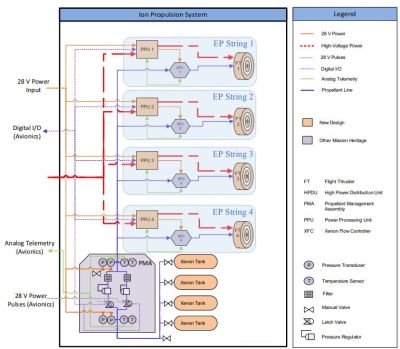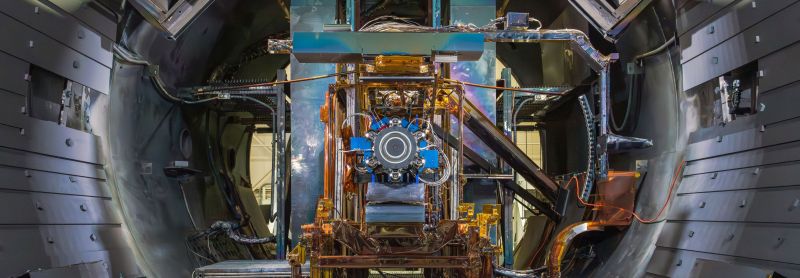Recently NASA announced earlier this month that the 12 kW Advanced Electric Propulsion System (AEPS) — which is scheduled to form an integral part of the Lunar Gateway when it is launched — has passed a number of qualification tests, after a rather tumultuous number of years during its development.

Originally designed since 2015 to propel the AARM mission to fetch rocks from an asteroid, when AARM was cancelled it became the cornerstone of the Lunar Gateway that should enable astronauts in the Artemis program to land on the Moon.
The AEPS is a solar electric propulsion system that uses xenon as its propellant, much like existing ion engines. Where it differs is in the power output, which should allow it to work as the primary propulsion method for large deep space and cargo missions. Much of the development and projections are covered in a 2017 presentation at the International Electric Propulsion Conference (IEPC).
Although the projected dates for much in this presentation (e.g. first flight of SLS Block 1 was in 2022, not 2018) are decidedly off, once the individual AEPS thrusters are validated, three strings will be mounted on the Power and Propulsion Element (PPE) that forms the core of the Lunar Gateway and is scheduled to be launched in November of 2025.
Top image: AEPS installed for testing at NASA Glenn. (Credit NASA)















I’m still a bit reserved regarding this “AEPS”. The input power (12kW) gets mentioned quite often, but iirc the output was 600mN. Has that really been achieved?🤔
The downside of ionic and plasma propulsion system is the enormous power demand to get any sort of thrust. The added mass of the power source offsets the performance; even a nuclear reactor has orders of magnitudes worse power density compared to chemical rockets, unless you’re talking about shooting propellant straight through the reactor core.
Which is exactly what we should be doing
Hall effect is more thrust dense and less fuel efficient than the other electrical thrusters, while still being way more efficient than chemical especially the kinds that can be used to maneuver for years at a time.
When you aren’t using the electricity for thrust you can use it for other things instead, so if you’ve got a satellite or station that’s going to have a noticeable power requirement once it’s been moved into place, but there’s no rush to get it there immediately…
And as for nuclear the biggest problem has generally been safety and how little fuel they’re supplied with. Of course you can’t do the things that are best for delta v or thrust when you might harm people, even if someone approved giving over more than the bare minimum to power the RTGs on a couple rovers a decade.
How is this very vague article relevant to this site?
How is your very vague comment relevant to the article?
How is your really vague reply relevant to the discussion?
How is your vaguely relevant retort anything but a reciprocal retribution?